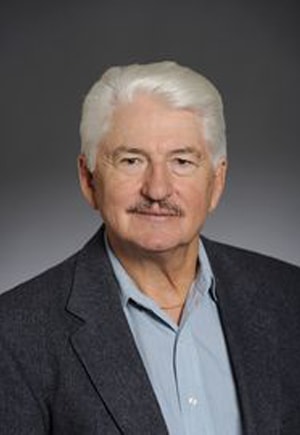Robert F. Sekerka
University Professor Emeritus
Condensed Matter Theory
Wean Hall 6416
412-268-2362

Education & Professional Experience
Ph.D.: Harvard University
Honors and Awards:
Minerals, Metals, Materials Society, Bruce Chalmers Award (1998)
International Association of Crystal Growth, Frank Prize (1992)
Research Interests
Most of my research is interdisciplinary and is concerned with theoretical problems in materials science that lead to challenging problems in physics and mathematics. Examples are the thermodynamics of stressed solids (including definition of chemical potentials), transport phenomena, surfaces and interfaces, phase transformations, the functional application of the Onsager reciprocal relations in multi-component diffusion and heat flow, the influence of anisotropic surface tension on crystal shape and faceting, and the theory of morphological stability Problems dealing with phase transformations lead to difficult free boundary problems that are generalizations of the classical Stefan problem because of boundary conditions that depend on the curvature of the free boundary. One seeks to calculate and understand the factors that determine the shapes of the interfaces that separate the growing phase from the nutrient phase.
Linear stability theory is used to analyze the conditions under which bodies of simple shape evolve spontaneously into more complex patterns. Non-linear analyses, frequently requiring numerical techniques, are used to track freely growing shapes and to ascertain fundamental aspects of the cellular and dendritic patterns that often result. We employ the phase field model (diffuse interface) in which an additional PDE is solved in lieu of boundary tracking, to calculate the operating state (tip speed and radius of curvature) of dendrites grown at large supercoolings, as well as cell shapes and solute segregation during directional solidification of alloys. We have also used Lattice-Boltzmann models to treat buoyancy driven convection, interdiffusion and the patterns that form when one immiscible fluid displaces another. More recent work includes calculation of surface morphologies near moving grain boundaries, irreversible thermodynamics of creep in crystalline solids, and the theory of multicomponent diffusion.
Selected Publications
R. F. Sekerka, G. B. McFadden, and W. J. Boettinger, “Analytical Derivation of the Sauer-Freize Flux Equation for Multicomponent Multiphase Diffusion Couples with Variable Partial Molar Volumes,” Journal of Phase Equilibria and Diffusion (JPEDAV) 37:640-650. http://link.springer.com/journal/11669, 1-11 October (2016) doi:10.1007/s11669-016-0500-0
Robert F. Sekerka, Thermal Physics: Thermodynamics and Statistical Mechanics for Scientists and Engineers, 610 pages, Elsevier, August 27, 2015. SBN-13: 978-0128033043 ISBN-10: 0128033045
R.F. Sekerka, S.R. Coriell, G.B. McFadden, Morphological Stability, Handbook of Crystal Growth, Chapter 14, 595 (2015)
Y. Mishin, J. A. Warren, R. F. Sekerka, W. J. Boettinger, Irreversible thermodynamics of creep in crystalline solids, Phys. Rev. B 88, 184303 (2013)
R.F. Sekerka, W.J. Boettinger, G.B. McFadden, Surface morphologies due to grooves at moving grain boundaries having stress-driven fluxes, Acta Materialia 61, 7216 (2013)
Chang-You Lin, Michael Widom, Robert F. Sekerka, Generalized potentials for a mean-field density functional theory of a three-phase contact line, Phys. Rev. E 88, 12117 (2013)
Robert F. Sekerka, Irreversible thermodynamic basis of phase field models, Philosophical Magazine 91, 3 (2011)
Etsuro Yokoyama, Robert F. Sekerka, Yoshinori Furukawa, Growth of an Ice Disk: Dependence of Critical Thickness for Disk Instability on Supercooling of Water, The Journal of Physical Chemistry B 113, 4733 (2009)
W.J. Boettinger, G.B. McFadden, S.R. Coriell, R.F. Sekerka, J.A. Warren, Lateral deformation of diffusion couples, Acta Materialia 53, 1995 (2005)
Robert F. Sekerka, Equilibrium and growth shapes of crystals: how do they differ and why should we care?, Crystal Research and Technology 40, 291 (2005)
Robert F. Sekerka, Analytical criteria for missing orientations on three-dimensional equilibrium shapes, Journal of Crystal Growth 275, 77 (2005)
Robert F. Sekerka, John W. Cahn, Solid–liquid equilibrium for non-hydrostatic stress, Acta Materialia 52, 1663 (2004)